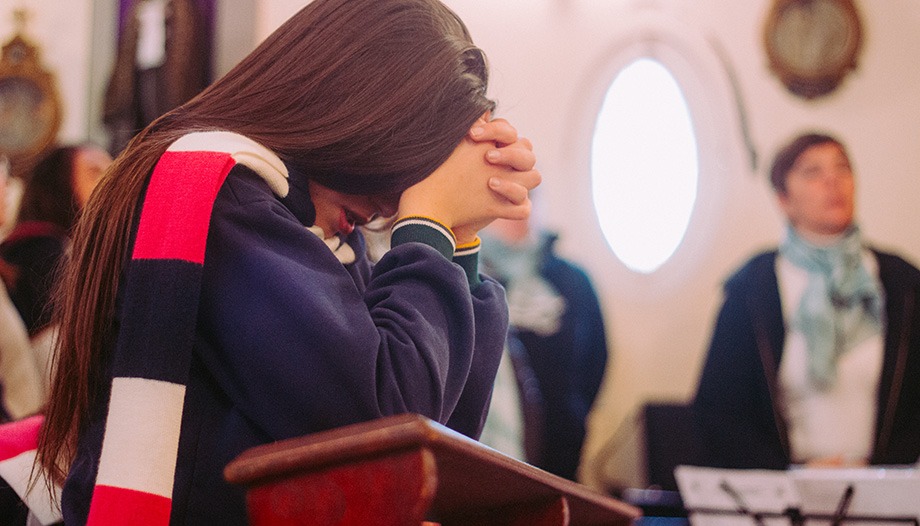Nothing is sacred. This seems to be the watchword of our time.
The awareness that we are in a sacred place or experiencing a sacred event refers us directly to a special presence of God. A presence that becomes in that moment and place, in some mysterious, almost tangible way. That was Moses' experience before the burning bush. "Bare your shoes, for the ground you are treading on is holy" (Ex 3:5).
This experience of the sacred, essential to the religious fact, permeated the lives of our ancestors. They knew that there were moments that were sacred, events in which time stopped and touched eternity.
The Eucharist, in a very special way, takes us to the same supper of Holy Thursday, before the unique sacrifice of Christ on the cross, to the mystery of the resurrection of Jesus. Sacred times in which eternity is touched. As it happened to Peter, James and John at the moment of Jesus' transfiguration on Mount Tabor. A moment in which, for a second, appearances are torn away and let us see the infinite.
Our ancestors also knew that there were sacred places. Privileged spaces, doors to the infinite, where God's presence was palpable. In sanctuaries like Lourdes or Fatima, the supernatural becomes close. In Nazareth we are overwhelmed to read on the altar "Verbum Caro Hic Factum Est". Here, 'hic', in this place heaven and earth came together. A place to enter with respectful silence, almost on tiptoe. Barefoot the soul.
And yet...
Today nothing is holy. Everything has been disenchanted. And trivialized, which is the way to put an end to that experience of being before something that takes us beyond, that transcends its own reality.
Undoubtedly, this loss of awareness of the sacred is one of the consequences of the 'disenchantment' that characterizes our secular era, as defined by the philosopher Charles Taylor. A mentality that shapes modern man. For today's man, time is nothing more than a succession of events, one after the other. And space is pure matter that refers only to itself. The very concept of the sacred seems to belong to another era, to the Middle Ages.
Undoubtedly, if we want to educate in a religious experience, we must begin by helping young people to perceive this experience of the sacred. Beginning with our own celebrations and temples. We must leave space for silence and discover that the temple is a sacred place inhabited by the living God. To recognize his presence. To be in awe and awe. To help them to enter with gestures, music, art in that experience that overwhelms the soul and puts it in contact with the mystery. And in this, we have to be sincere, we have been losing sensitivity and we have been infected by this profane environment.
But education in the sacred embraces the whole of life. We must teaching children and young people to discover the footprint of the Creator when they contemplate nature. Show them that there is meaning in human history. Help them to tear away from appearances and see beyond.
We need to reconnect with the sacred and educate the new generations about it. And it is not an easy task. There is a whole culture that makes it difficult. But it is essential to do so if we truly want to face the evangelization of this world.
Perhaps this is, by the way, one of the keys to the success of the work of J.R.R. Tolkien, the author of 'Lord of the Rings. That through fantasy he has managed to reveal that the world is really 'enchanted'. His medieval epic makes us connect with the most intimate beats of our being and gives us back hope. There is a space for the sacred in all his work.
In our favor, as always, we have the heart of the young person who vividly senses that there must be 'something more'. That time cannot run out. That, as Máximo said in the movie GladiatorWhat we do in life is echoed in eternity".
Teaching Delegate in the Diocese of Getafe since the 2010-2011 academic year, he has previously exercised this service in the Archbishopric of Pamplona and Tudela, for seven years (2003-2009). He currently combines this work with his dedication to youth ministry directing the Public Association of the Faithful 'Milicia de Santa Maria' and the educational association 'VEN Y VERÁS. EDUCATION', of which he is President.











